9+ Sample Equipment Calibration Logs
-
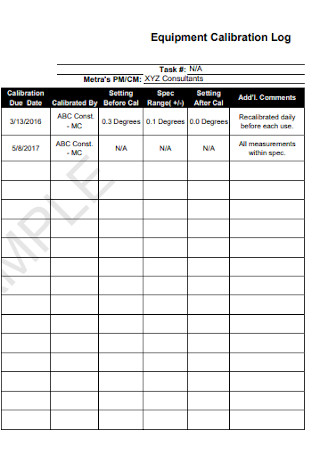
Equipment Calibration Log Template
download now -

Equipment Calibration Log Sheet
download now -
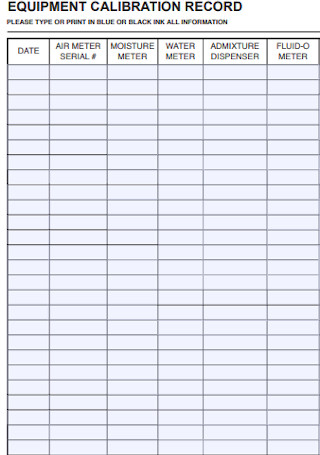
Equipment Calibration Record Log
download now -
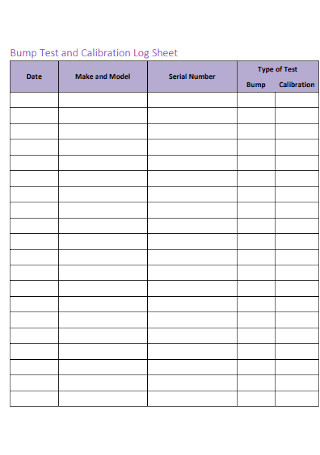
Bump Test and Calibration Log Sheet
download now -

Equipment Calibration Log Format
download now -
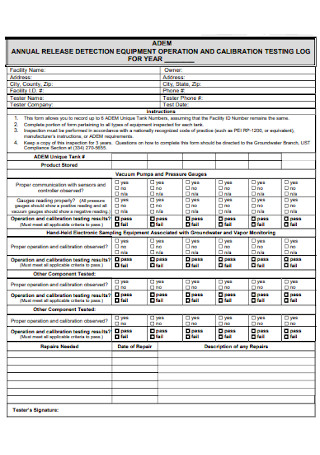
Equipment Calibration Testing Log
download now -
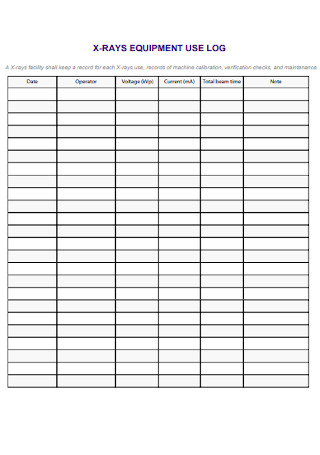
X Ray Equipment Calibration Log
download now -
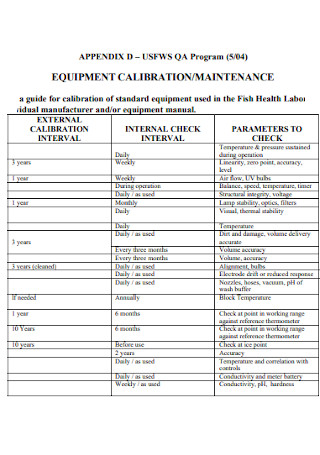
Equipment Calibration Maintenance Log
download now -
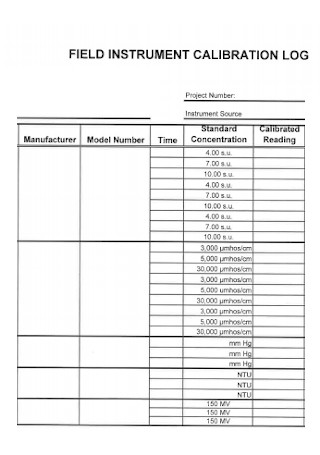
Field Instrument Calibration Log
download now
FREE Equipment Calibration Log s to Download
9+ Sample Equipment Calibration Logs
What Is An Equipment Calibration Log?
Advantages of Equipment Calibration
Risks That Can Come With Lack of Equipment Calibration
Different Types of Calibration
Steps in Properly Calibrating Equipment
FAQs
How often should equipment undergo calibration?
Which of my equipment should be calibrated?
What is metrology?
What Is An Equipment Calibration Log?
An equipment calibration log is defined as an important document that is used for the purpose of documenting the various types of equipment that need to undergo a calibration process. It also records every kind of corrective action that was done for every malfunctioned equipment and logs down the equipment’s location for easier identification whenever it needs to be calibrated again in the future.
Advantages of Equipment Calibration
Here are the different advantages that come with proper calibration of equipment, especially when done at an accredited laboratory:
Risks That Can Come With Lack of Equipment Calibration
Listed below are the different risks that can come when your equipment has been out of calibration for a long time or has been improperly calibrated:
Different Types of Calibration
Here are some of the most frequently performed types of calibration done on equipment:
- Pressure Calibration – Pressure calibration is an important function in many industries where measurement equipment, typically measuring gas and hydraulic pressure, is used to monitor process performance and safety. There are numerous quality procedures in place to maintain quality standards, and because many industrial processes rely on pressure measurement, pressure calibration plays an important role in the quality assurance of a company.
- Temperature Calibration – Temperature calibration is performed in all processes where temperature readings are critical, and it is done in a controlled environment. Thermistors, thermocouples, or Platinum Resistance Thermometers (PRTs), also known as Resistance Temperature Devices (RTDs), are commonly used in temperature calibration. It is important to note that simply reading the temperature from a temperature sensor with an RTD or thermocouple indicator and then comparing the readings to the in-line field indicator is not a temperature calibration.
- Flow Calibration – A flow meter (or flow sensor) is a type of test device that measures the linear, nonlinear, mass, or volumetric flow rate of a liquid or gas. The flow rate is the rate at which a process fluid moves through pipelines, orifices, or vessels at a given time, and it is measured by control and instrumentation engineers in order to monitor and regulate the speed and efficiency of industrial flow processes and devices. Flow calibration services are required on a regular basis for these flow meters that check product or feedstock quality and quantity, fuel/energy quantity, or function in a critical process to ensure that measurements are accurate and operations can continue in a safe and timely manner.
- Pipette Calibration – Pipette calibration is critical for accurate and precise pipetting results in laboratories that frequently use this measuring instrument. All pipettes used in various laboratories, including single-channel, multi-channel manual pipettes, and electronic pipettes, must adhere to several aspects of the calibration process and protocols. The primary goal of pipette calibration is to ensure that dispensing is performed with the desired accuracy.
- Mechanical Calibration – Mechanical instruments are subject to drift as a result of regular use, mechanical shock, and exposure to varying atmospheric conditions, necessitating mechanical calibration. Mechanical calibration involves the calibration of factors such as mass, force, dimension, angle, volume, flatness, torque, and vibration in a temperature-controlled environment.
Steps in Properly Calibrating Equipment
What happens when measuring devices become inaccurate over time? It will need recalibration, of course. How extensive is it? It totally depends on how inaccurate the measuring device has become. How should it be done? Here are the steps to follow:
-
1. Identify the Measuring Equipment
Create a comprehensive list of every device in your facility that is used to measure something in this step. This includes thermometers, gauges, and other similar devices. Then, consider whether all of the listed devices are still useful. Devices that are no longer in use should be removed or labeled as not being checked for accuracy on a regular basis. Check with the managers, supervisors, and employees in the area before removing any device to ensure that it is not in use. One idea is to put a sign on the instrument stating that it will be removed unless management is notified that it is being used. The last thing you can do here is to label the devices.
-
2. Determine the Calibration Requirements and Perform Accuracy Checks
Ensure that the instrument is capable of handling the calibration standards in this step. A 100-pound weight on a sensitive table scale would be an extreme example. Similarly, if exposed to rapid temperature extremes, a bimetal or dial-type thermometer can be damaged. After that, run an accuracy check. Accuracy checks determine whether or not the instrument is reading the true or correct value at a single point. Checking the accuracy of a thermometer on a regular basis, for example, by immersing the probe in an ice slurry to see if the thermometer reads 32ºF.
-
3. Outline the Methodology
After performing accuracy checks, you can now determine the calibration methodology in this step. Each method of determining the accuracy of a measuring device should have clearly defined procedures that a trained individual can follow. The manufacturer of the equipment is a valuable resource for accuracy checks or calibration procedures. Keep in mind that these procedures do not have to be complicated.
-
4. Perform the Corrective Actions
When a device is identified as being outside of the acceptable range, a clearly defined audit corrective action is required. The obvious first step is to correct the device right away. If that is not possible, consider whether it should be used. If you decide to keep using it, include a documented explanation of any resulting monitoring record as to the deviation.
An often overlooked corrective action plan is determining whether product safety (such as critical control point measurement) or Quality Has Been Compromised. While conducting the investigation, all products may need to be held back to the last acceptable, documented check/calibration of the device.
-
5. Perform a Verification Process
This step includes many more steps, such as ensuring that the personnel performing the check/calibration are following the procedures and are questioned about what they would do if the device was inaccurate, ensuring that the procedures and acceptable deviation range remain valid, and ensuring that the list of devices to be calibrated remains accurate.
-
6. Document the Process
The last step would be to document the entire calibration process from identifying the instruments down to the verification process. In documenting the calibration process, keep in mind that it should follow any established federal, state, local, or company requirements for the documents that have the ability to accurately recreate the history of the product.
FAQs
How often should equipment undergo calibration?
This is determined by the importance of the measurements to your product or service, the amount of wear and tear that the instrument will experience in service, the stability of the instrument itself, and a review of the calibration records that already exist to determine whether an adjustment was previously required. For most types of equipment, a 12-month interval is the starting point. If adjustments are to be made, a 6- to 9-month interval is required.
Which of my equipment should be calibrated?
Calibration should be performed on all types of measuring and testing equipment. This is due to the fact that the performance of measuring and testing equipment can change over time as a result of the environment to which it is exposed, wear and tear, overload, or improper use. The measurement and test equipment’s accuracy should be checked before use and calibrated on a regular basis or after exposure to influence factors.
What is metrology?
Metrology is a technical term that refers to all measurement-related activities and procedures. The ultimate goal of metrology, also known as measurement science and its application, is to ensure accurate, comparable, and repeatable measuring results. Metrology is classified into three types: scientific, industrial, and legal metrology.
Calibration is important because it helps assure accurate measurements and they are required for most types of research, development plan, and innovation. It is also required for the safe and profitable production across all industries that we benefit from every day. It is also equally important that an equipment calibration log be made after the process. As said earlier in this article, this is because nearly all companies require documentation of their activities, especially ones that are as extensive as calibrating equipment. In this article, you can acquire ready-made examples of an equipment calibration log so that you can have something to use as a reference when you need to make one.
